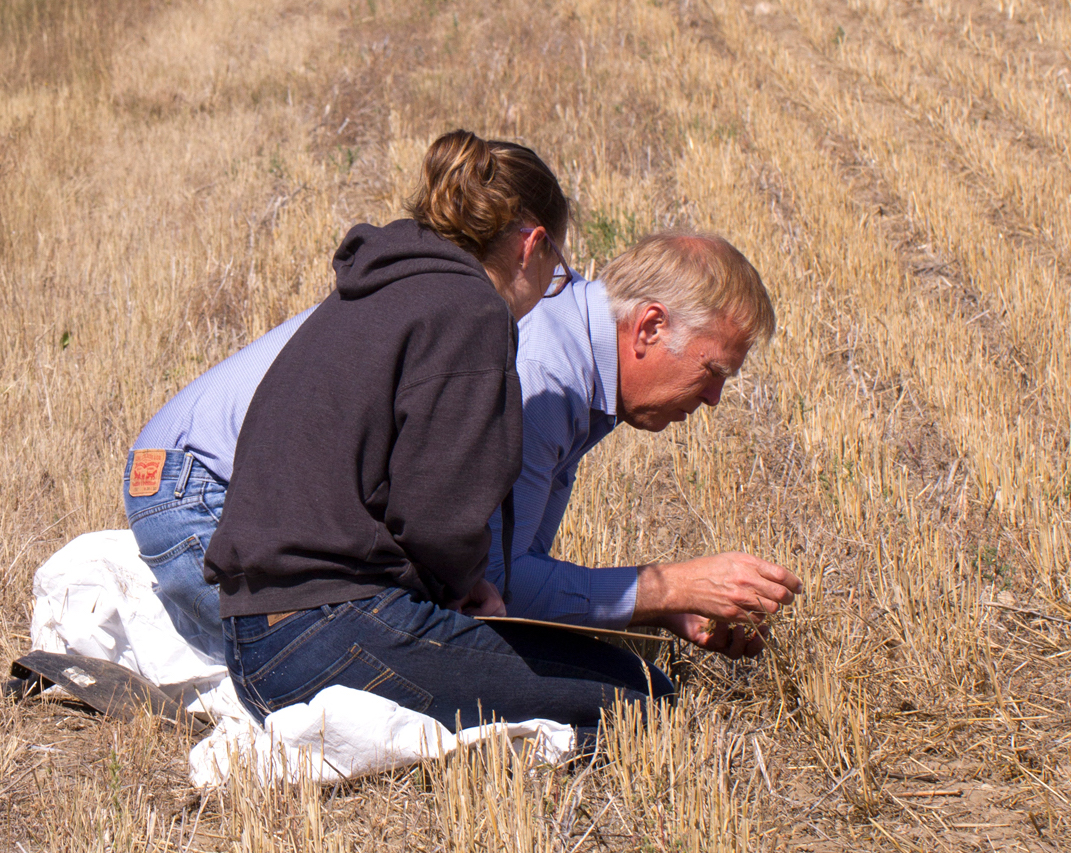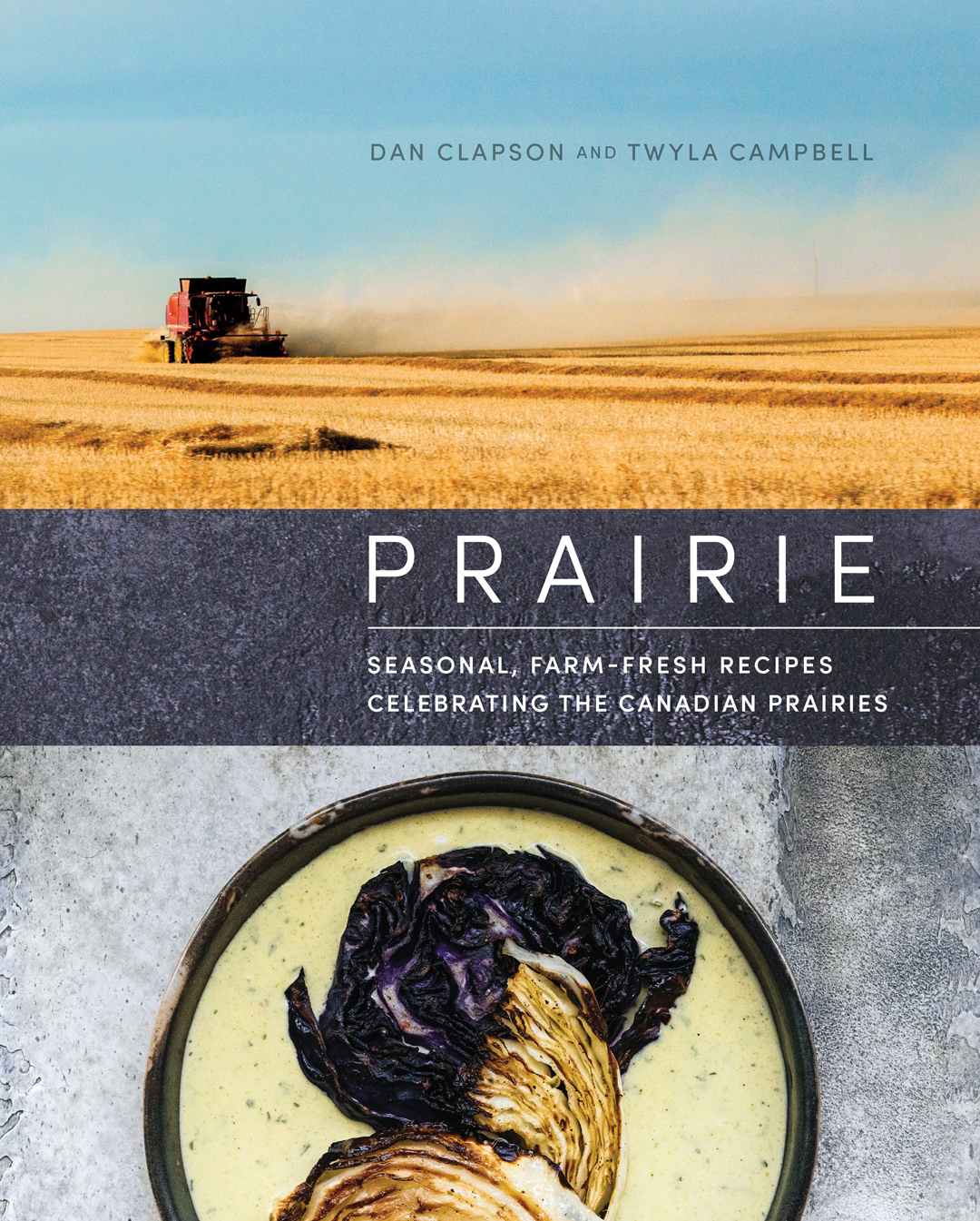FARM SITES NEEDED FOR ANNUAL WHEAT PEST SURVEYS
BY IAN DOIG • PHOTO COURTESY OF SHELLEY BARKLEY: RESEARCHERS SCOTT MEERS AND KRISTEN GUELLY COUNT SAWFLY DAMAGE IN AN ALBERTA FARM FIELD
Each fall, once harvest is complete, Alberta Agriculture, Forestry and Rural Economic Development collects soil samples for wheat midge and does stem counts for wheat stem sawfly.
Farmers rely upon the forecast maps these cereal pest surveys produce, and provincial insect survey technicians in turn count on farmers to participate in the process and voluntarily offer up test sites on their land.
To better understand the importance of this pest assessment process, GrainsWest recently spoke with Shelley Barkley, Alberta Agriculture insect technologist. Barkley will conduct both surveys between late August and early September.
GrainsWest: Please describe the methods used to survey wheat midge and wheat stem sawfly populations.
Shelley Barkley: For wheat midge, we soil sample in the field. We work from the headland in a big horseshoe shape. We gather about three quarters of a litre of soil in a pail. That material is brought back to the Crop Diversification Centre South in Brooks. It’s kept in a cooler until I can wash it through a set of sieves and process the wheat midge cocoons out of the soil. Then we dissect them to evaluate the amount of parasitism by Macroglenes penetrans [a benficial wasp species that preys on midge] in each one of those cocoons.
And with the wheat stem saw fly, we work from the field edge and count the number of cut stems and non-cuts stems in a one-metre measure. We repeat that in four places along the headland. That gives us the percentage of cut stems, which is what is shown on the forecast maps.
It’s important to note, we have field entry protocols in place. I’m going to park on the approach to your field, but I will not drive in your field. And all my tools are sanitized between each field. And I wear booties between each field, so I’m not spreading stuff around.
GW: How valuable is the data these surveys produce, and how is it used?
SB: That data is all crunched together and put into forecast maps for wheat midge and sawfly for Alberta and the Prairies. It gives us a picture of the populations going into winter. Producers can then understand their threat for the upcoming season when they look at those maps. It allows them to prepare and to know whether they have to use different seed varieties or management techniques such as seeding early to beat wheat midge.
This work is also used by researchers to look at insect populations for control options. It goes into a long-term data set that helps scientists get direction for their research.
GW: How can individual farmers get involved and support the survey process?
SB: They can reach out to me and offer up fields for us to do the surveys in. If you’re south of highway nine, we would use your field for both wheat midge and wheat stem sawfly survey. It’s important to note I will send you the results for your field so you know what the counts of wheat midge and sawfly are in that particular field.
GW: In what areas of the province are volunteers needed?
SB: All over. I need volunteers for wheat midge from the U.S. border all the way up to Fort Vermilion. And for wheat stem sawfly, it’s from a line south of highway nine all the way to the U.S. border and then from the Saskatchewan border all the way over into Carson County.
To volunteer the use of your farm for wheat midge and wheat stem sawfly surveys, contact Shelley Barkley at shelley.barkley@gov.ab.ca.







Comments